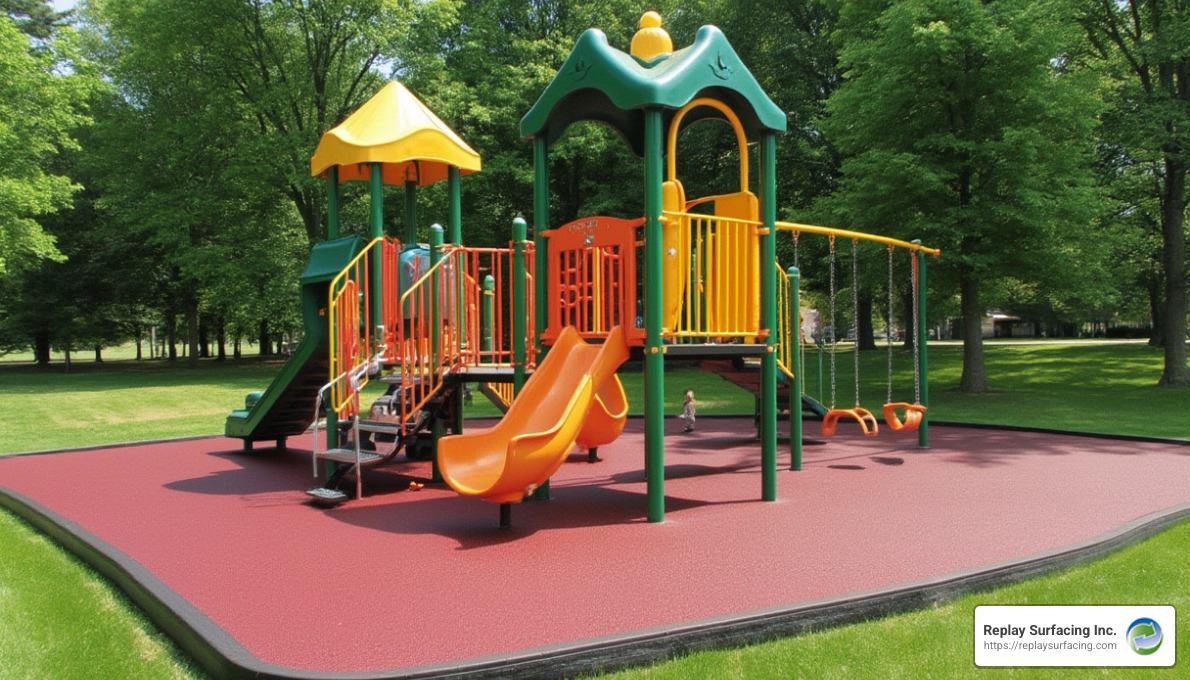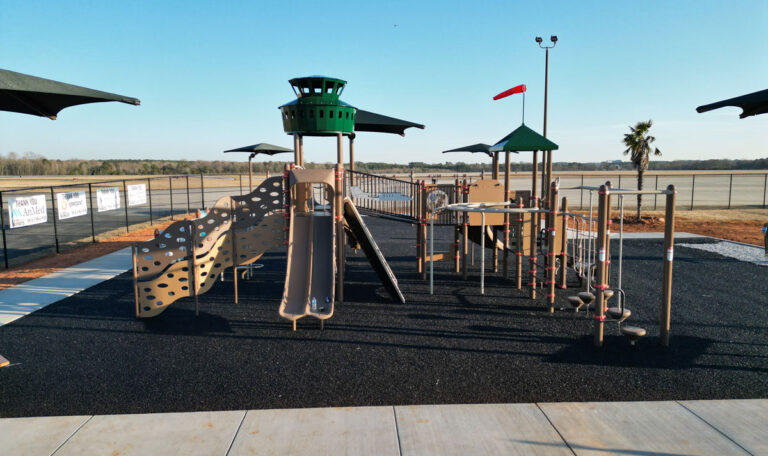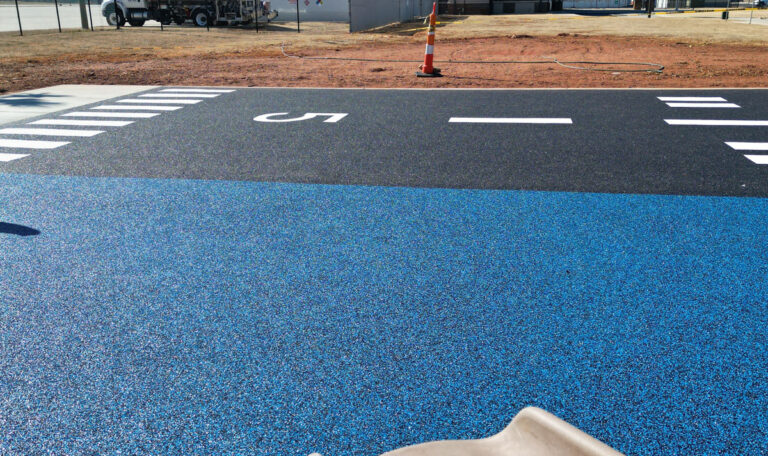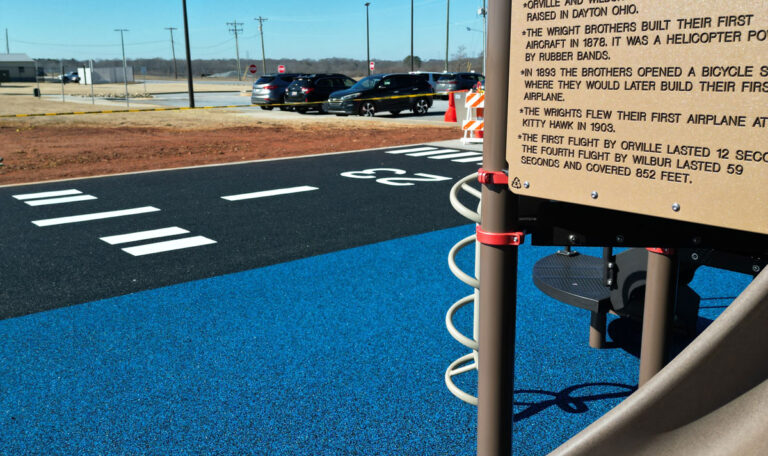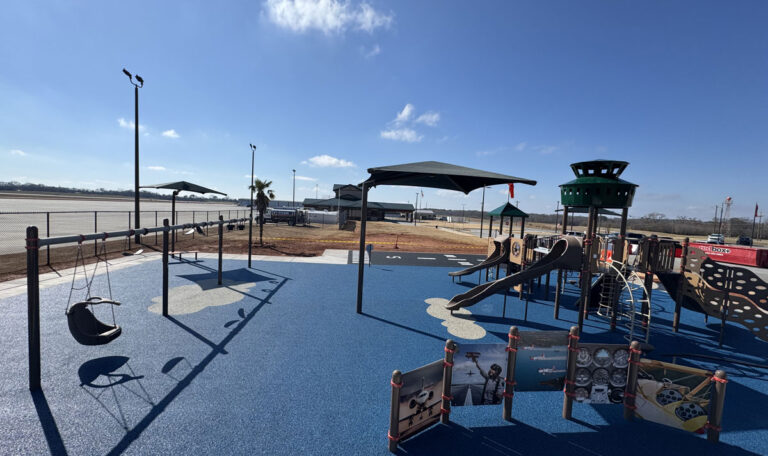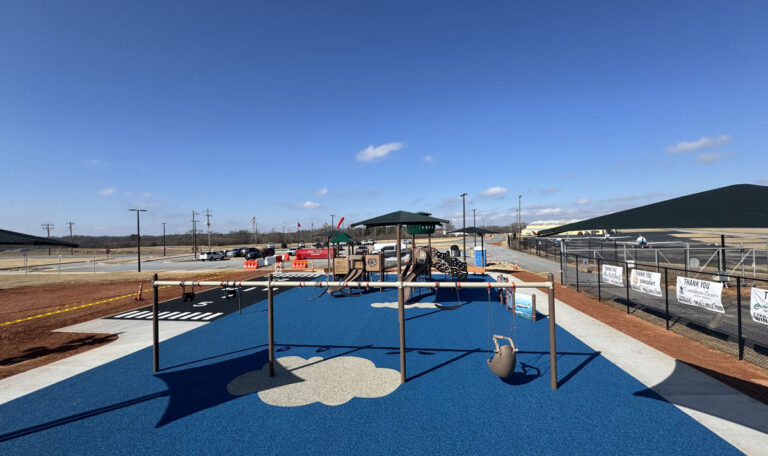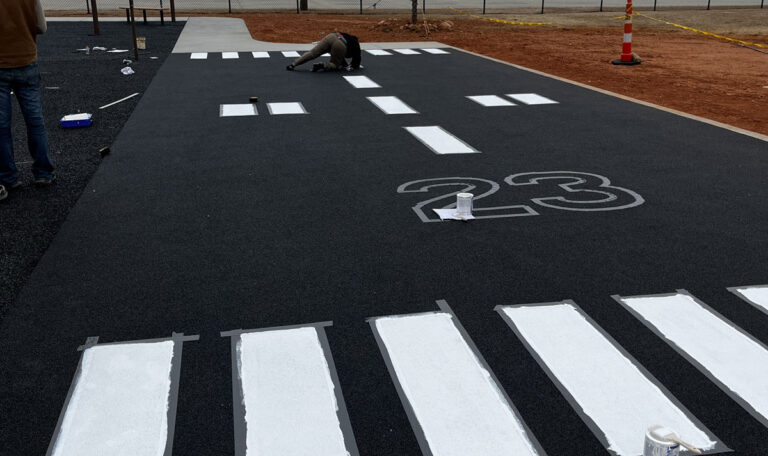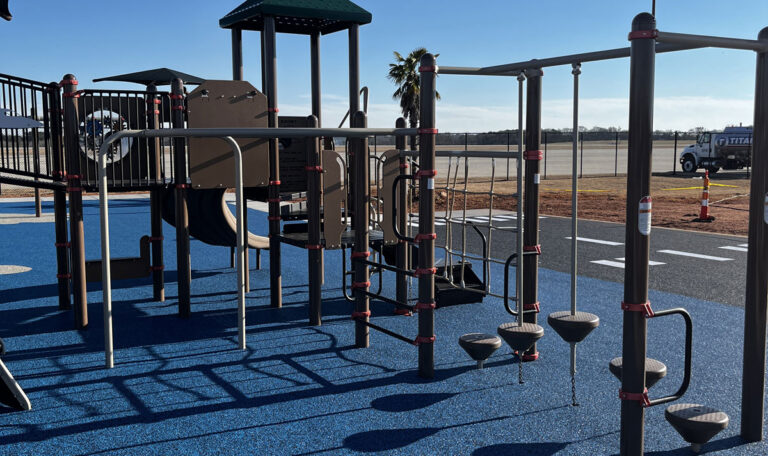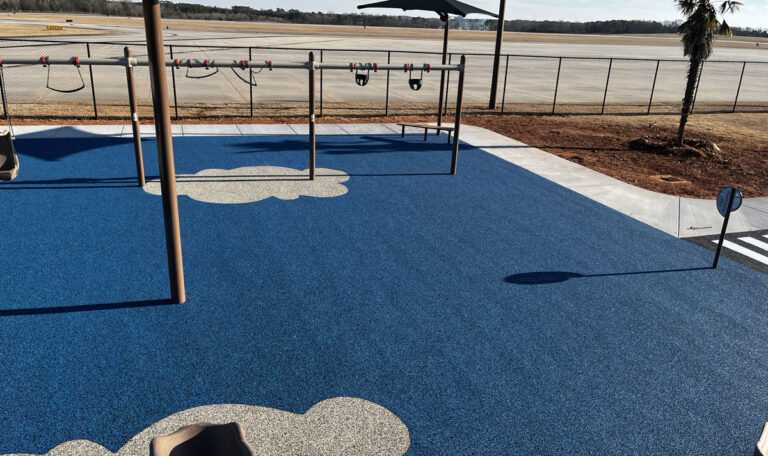Rubber softfall cost is a key consideration when planning safety surfaces for playgrounds and sports areas. This cost breaks down into several elements:
- Low Cost: $9 per sq. ft.
- Average Cost: $13 per sq. ft.
- High Cost: $18 per sq. ft.
When thinking about playground safety and design, softfall surfaces are incredibly important. They provide a shock-absorbing, slip-resistant foundation that guards against injuries during play. Whether at a school or a community park, rubber surfaces offer durability and minimal maintenance, standing up to heavy foot traffic and the elements.
My name is Landon Olson, and I’m dedicated to making playgrounds safer and more sustainable through rubber softfall solutions. With a background in mechanical engineering and business, I help facilities find eco-friendly, cost-effective options that meet their safety needs.
Basic rubber softfall cost terms:
Understanding Rubber Softfall
When it comes to playground safety, rubber softfall is a game changer. It’s not just about keeping kids safe from falls—it’s about creating a space that lasts and looks great.
Components of Rubber Softfall
Rubber softfall is made up of two main layers: the base layer and the wear layer.
- Base Layer: This is the thick, springy part that cushions falls. Made from recycled tires, known as SBR (Styrene Butadiene Rubber), it provides excellent shock absorption. The thickness of this layer can vary, depending on the critical fall height needed for safety.
- Wear Layer: This is the colorful top layer that you see. It’s made of EPDM (Ethylene Propylene Diene Monomer), which is durable and UV-resistant. It’s designed to withstand weather and wear while keeping its vibrant look.

Installation Process
Installing rubber softfall involves several key steps to ensure a safe and durable surface.
- Compacted Aggregate: First, a layer of compacted aggregate is laid down to create a stable base. This costs between $3-$6 per square foot and is crucial for a smooth and level surface.
- Grading: Before installation, the ground needs to be prepped and leveled, a process known as grading. This ensures the rubber surface sits flat and drains well.
- Bonding Agents: The rubber pieces are held together with bonding agents. There are two types: Aromatic, which is more affordable but can change color over time, and Aliphatic, which is clear and maintains color better but costs more.
Durability and Safety:
Rubber softfall is incredibly durable. It’s built to handle the wear and tear of heavy foot traffic and harsh weather without cracking or fading. Plus, its slip-resistant surface adds an extra layer of safety, reducing the risk of falls even when wet.
Design Potential:
The design possibilities are nearly endless. With a variety of colors and patterns available, you can customize the look to fit any theme or preference. This makes rubber softfall not only a practical choice but also a visually appealing one.

With its combination of safety, durability, and design flexibility, rubber softfall is a top choice for playground surfaces. As we explore the costs involved, keep in mind these benefits that make it a wise investment for any play area.
Rubber Softfall Cost Factors
When planning for a playground, understanding the rubber softfall cost is key. Let’s break down the elements that affect pricing.
Cost Per Square Foot
The cost of rubber softfall varies, generally falling between $9 and $18 per square foot. This range depends on several factors:
- Depth Impact: The thickness of the rubber softfall directly affects the cost. Deeper surfaces, required for higher critical fall heights, use more material and therefore cost more. For example, a surface designed for a 10-foot fall will be thicker, and thus more expensive, than one for a 4-foot fall.
- Color Impact: Choosing vibrant, customized colors can also increase costs. Standard colors are generally less expensive, while custom blends or bright hues may push the price to the higher end of the range.
Additional Costs
Beyond the cost per square foot, there are other expenses to consider:
- Site Preparation: Before installing rubber softfall, the site needs proper preparation. This includes grading to ensure the area is level and has adequate drainage. Expect to pay for this crucial step, which ensures the longevity and safety of the surface.
- Bonding Agents: The type of bonding agent used can impact costs. Aliphatic bonding agents, which maintain color better over time, are more expensive than aromatic ones.
- Maintenance: While rubber softfall is low-maintenance, it still requires periodic upkeep. Top sealing the surface every few years helps maintain its appearance and durability. This maintenance typically costs about $1 per square foot if done professionally, but DIY options are cheaper.
- Grading: Ensuring the ground is perfectly level is essential. Grading costs can vary based on the site’s condition and size.

By understanding these cost factors, you can better plan your budget and ensure you choose the right options for your needs. Up next, we’ll compare rubber softfall to other playground surface alternatives, highlighting why it stands out as a top choice.
Comparing Rubber Softfall to Alternatives
When choosing a playground surface, weigh the benefits of rubber softfall against other options like wood chips, recycled tire mulch, and rubber tiles. Each has its unique features, but rubber softfall often comes out on top for several reasons.
Wood Chips
Wood chips are a common choice for playgrounds due to their natural appearance and lower initial cost. However, they require frequent replenishment to maintain the proper depth for safety. This ongoing maintenance can add up over time. Additionally, wood chips can become uneven and create tripping hazards, especially after heavy use or rain.
Recycled Tire Mulch
Recycled tire mulch is another option, made from shredded tires. It provides good shock absorption and is more durable than wood chips. However, it can scatter easily, requiring regular raking and refilling to keep it in place. While it is an eco-friendly choice, it doesn’t offer the same seamless look as rubber softfall.
Rubber Tiles
Rubber tiles are made from recycled tires or synthetic rubber and provide a durable, slip-resistant surface. They are easy to install and replace if damaged. However, they tend to be more expensive than other options, including rubber softfall. The seams between tiles can also become a weak point, especially in high-traffic areas.
Benefits of Rubber Softfall
Rubber softfall stands out for several reasons:
- Durability: Made from materials like SBR and EPDM, rubber softfall is highly durable. It withstands various weather conditions and heavy foot traffic without degrading. This longevity makes it a cost-effective choice over time.
- Low-Maintenance: Unlike wood chips or recycled tire mulch, rubber softfall requires minimal upkeep. Its seamless design means no raking or refilling. Regular cleaning with water and mild detergent is usually sufficient to keep it looking new.
- Safety: Safety is a top priority in playgrounds, and rubber softfall excels in this area. It offers excellent shock absorption, reducing the risk of injuries from falls. Its slip-resistant surface ensures a stable playing area, even when wet.
In summary, while options like wood chips and recycled tire mulch have their merits, rubber softfall provides best durability, low-maintenance, and safety. These features make it an optimal choice for playgrounds, offering peace of mind and a long-lasting surface.
Next, we’ll dive into some frequently asked questions about rubber softfall cost to help you make informed decisions for your playground project.
Frequently Asked Questions about Rubber Softfall Cost
When planning a playground project, understanding the cost and benefits of rubber softfall is crucial. Here, we’ll address some common questions to help you make informed decisions.
How long does rubber surfacing last?
Rubber surfacing is known for its impressive durability, often lasting between 10 to 15 years. This lifespan can be extended with regular maintenance, such as periodic cleaning and inspections. Keeping the surface free of debris and ensuring proper drainage will help maintain its condition and safety features over time.
How much does it cost to install a rubber playground surface?
The cost of installing a rubber playground surface varies based on several factors, but generally, you can expect to pay between $10 to $15 per square foot. The depth of the rubber layer is a significant cost factor. Deeper surfaces provide better shock absorption, which improves safety but increases the material cost. Additionally, choosing vibrant color combinations or custom designs can also impact the overall price.
What are the benefits of using rubber surfacing?
Rubber surfacing offers numerous benefits that make it a popular choice for playgrounds:
- Safety: Rubber softfall provides excellent shock absorption, reducing the risk of injuries from falls. Its slip-resistant surface remains stable even when wet, ensuring a safer play environment for children.
- Durability: Made from materials like EPDM and SBR, rubber surfacing withstands heavy foot traffic and various weather conditions without degrading. This resilience ensures a long-lasting surface that remains functional and attractive over the years.
- Customization: With a wide range of colors and design options, rubber surfacing can be custom to fit the aesthetic and functional needs of any playground. This flexibility allows for creative designs that can improve the visual appeal of the play area.
In summary, while the initial rubber softfall cost may be higher than some alternatives, its long-term benefits in safety, durability, and customization make it a worthwhile investment. Next, we’ll explore how these costs compare to other playground surfacing options.
Conclusion
At Replay Surfacing Inc., we believe in changing environmental hazards into sustainable playground solutions. Our rubber softfall products not only provide a safe and durable surface for children to play on but also help protect the planet by recycling tires into something beneficial.
Sustainability is at the heart of what we do. By using recycled materials, we reduce waste and contribute to a greener environment. Choosing rubber surfacing means supporting eco-friendly practices that have a positive impact on our world.
Customization is another key advantage of our products. With a variety of colors and designs, you can create a playground that is not only safe but also visually appealing. Whether you want a bright, colorful theme or a more natural look, our rubber surfacing can be custom to meet your needs.
Durability ensures that your investment lasts. Our surfaces withstand harsh weather conditions and heavy use, maintaining their safety features and appearance over time. This means fewer replacements and repairs, saving you money in the long run.
In conclusion, investing in rubber softfall from Replay Surfacing Inc. offers numerous benefits. While the initial rubber softfall cost might be higher compared to other options, the long-term advantages of safety, durability, and customization make it a smart choice.
To learn more about how we can help make your playground dreams a reality, visit our Playground Surfacing page. Let’s create a safe and sustainable play environment together!

